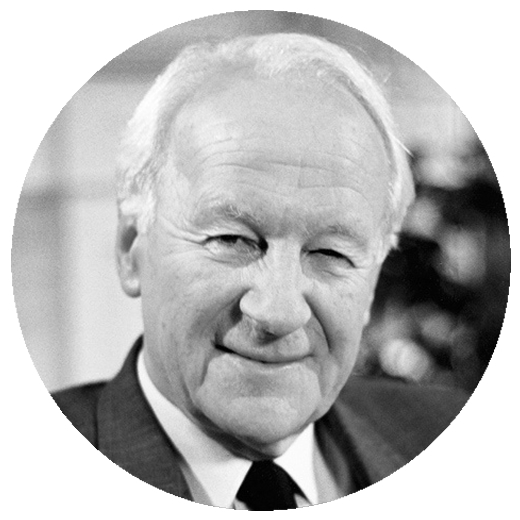
JOHN STOTT
Founder
|
Lausanne Movement
John Stott and the Lausanne Movement
Billy Graham, a friend since the 1950s, invited John Stott to help shape the 1974 International Congress on World Evangelization in Lausanne, Switzerland. (He had earlier played a leading role in the 1966 Berlin World Congress on Evangelism.)
““Thank you for the model of your life and for your life-long commitment to the unity of the whole church, the preaching of the whole gospel, and the evangelisation of the whole world.” ”
In Lausanne John Stott served as chief architect of the landmark Lausanne Covenant, which was adopted as an evangelical basis of cooperation for hundreds of collaborative ventures. Social justice, too long identified as a concern only for adherents to ‘a social gospel’ was now declared a biblical responsibility for evangelical Christians. This proved a watershed moment for the Church.
In 1989 John Stott led the crafting team for The Manila Manifesto in The Second Lausanne Congress. Twenty years later, he took a keen and prayerful interest in the crafting of The Cape Town Commitment. This was, in his view ‘beautiful and profound’ achieving, to his delight, ‘an astonishing degree of unity’.
“Stott was the most unifying leader in global evangelicalism for several decades. He reached millions with his theological works, sermons, devotionals, and Bible study materials. He was the primary architect of the 1974 Lausanne Covenant, a watershed document in church history. ”
John Stott co-founder of the Lausanne Movement
John Stott remained humble despite all his achievements. He wrote fifty books, translated into some 65 languages, and edited more; he founded or was catalyst for the founding of many endeavours, national and international; he was decorated as a Commander of the Order of the British Empire, and served as a Chaplain to the Queen; he received a Lambeth doctorate and five honorary doctorates from universities; and was the subject of several PhD theses.
Friendship featured highly in all John Stott’s ministry and dealings; he worked and he networked through friendship. This gift of friendship, combined with his interdisciplinary and enquiring mind, equipped him ‘to bring traditional Christianity to bear on science, medicine, contemporary thinking about war and nuclear deterrence, and such large questions. He was perhaps uniquely able to convene that largely private discussion [among] the upper echelons of science and medicine and the armed forces … as he laboured mightily to bridge the Christian faith community and the hottest of emerging issues’.
“I studied under John Stott at the London Institute for Contemporary Christianity. He was a kind, humble and profound man. A private Tea at his flat was one of the highlights of my theological education.”
His royalties alone could have afforded him a comfortable life. But he lived simply, preferring to invest them (‘recycle them’ was his term) in books for pastors and libraries in the majority world. From 1970, his home was a modest two-room flat built above the garage behind the All Souls Rectory. His bedroom doubled as a corridor, and as a study for his research assistant. One wall of his living room was lined with bookshelves, and he worked from his dining table.
Lausanne Tribute | John Stott
John Stott
Read his most enduring contribution to the
Lausanne Movement



